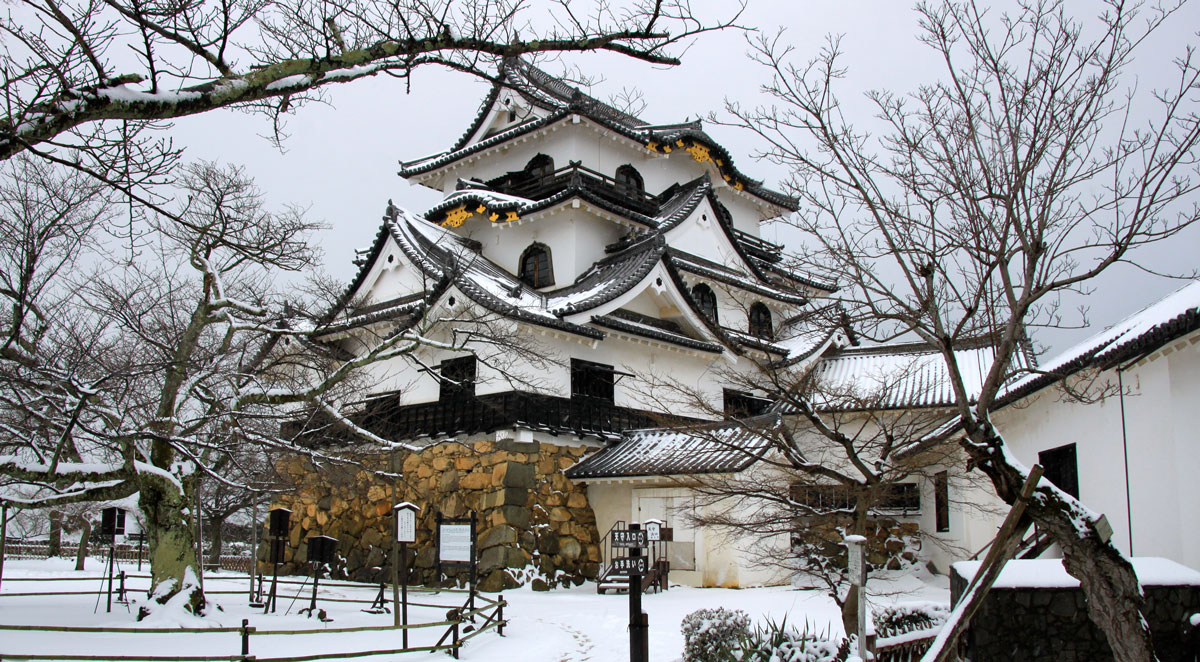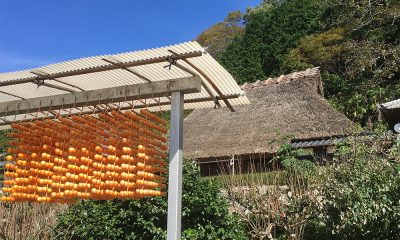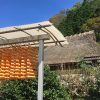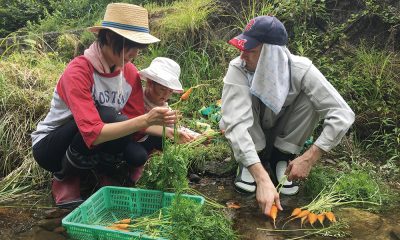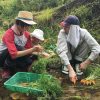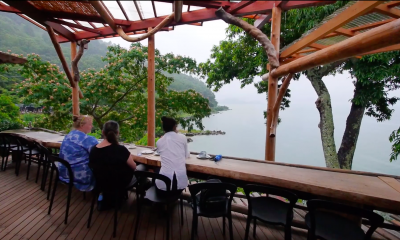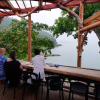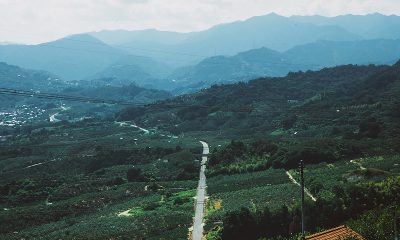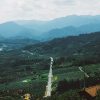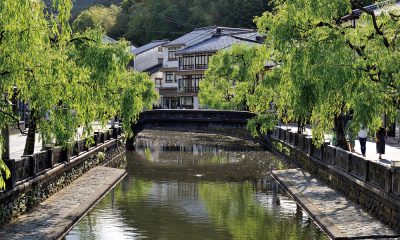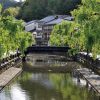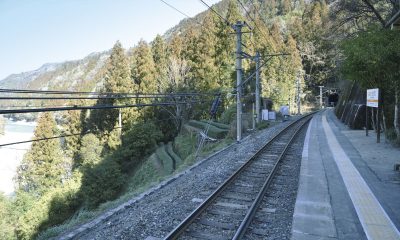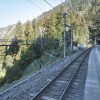Travel
A Perfect Long Weekend in Shiga
Make the most of a Shiga winter with a loop around Lake Biwa discovering snow fields, castles, museums, and tasty local cuisines along the way.
Renowned as the home of Japan’s largest freshwater lake, Shiga is also the best of the Kansai prefectures for skiing and snowboarding. For winter sports fanatics, the snowy season is a great time to visit. If you find yourself headed there this winter, rent a car and follow our itinerary for a spectacular four-day circuit around Biwako.
Day 1
Take a cruise on Lake Biwa
Choose from three types of cruises to take in the breathtaking scenery of Lake Biwa by boat: the Michigan Cruise, the Chikubushima Cruise, and the Biwako Tour of Islands. Trips go for around 60–120 minutes and costs vary depending on cruise type.
Try Funazushi
Funazushi is a type of narezushi local to Shiga. The dish is made with a type of Japanese carp called nigorobuna, and it can only be found in Lake Biwa. The fish is preserved in salt, aged for a year, then compressed with steamed rice and fermented for up to four years. The result is a product with a strong smell, similar to that of blue cheese. While it can be an acquired taste, a good spot to try it is at Ganzo Sakamotoya.
Stroll the grounds of Enryaku-ji
The renowned temple of Enryaku-ji, the first outpost of the Japanese Tendai sect of Buddhism, was founded atop Mount Hiei in 788. There are around 100 historical buildings in the vicinity. A ropeway takes you to top of the mountain where you can walk between the World Heritage buildings and see expansive views over Lake Biwa.
Stay the night at Ogoto Onsen
Perched on the edge of Lake Biwa, this onsen town has a long history of about 1,200 years. Book a room in a traditional ryokan (Japanese style inn) with hot spring facilities like Yumotokan Ryokan, which offers open-air baths where you can soak with lake views.
Day 2
Ski and snowboard at Hakodateyama Ski Resort
The slopes of Hakodateyama are well known across Kansai, located 690m above sea level in a mountainous region to the northwest of JR Omi-Imazu Station. Known for its heavy powder falls in January and February, the richly varied piste caters to everyone from beginners to advanced-level skiiers and snowboarders. The use of artificial snow machines allows skiing to start in December.
Eat a local eel dish
Refuel at restaurant Nishitomo with unagi don—bowls of rice with fillets of grilled eel layered on top. Another local eel dish made using eel caught in lake Biwa is unagi nabe, where the eel is prepared in a stew similar to sukiyaki with tofu and vegetables including burdock root and spring onions.
Stay at a Lakeside Hotel
Drive to the port city of Nagahama and check into a lakeside hotel like Green Hotel Yes Nagahama Minatokan or North Biwako Hotel Grazie to relax before another big day in the snow.
Day 3
Hit the slopes at Grand Snow Okuibuki
One of the larger ski resorts in the Kansai area, this location has a richly varied trail layout that makes good use of the natural terrain of the slopes. Okuibuki is on the border of Shiga and Gifu prefectures and with less total meterage than Biwako Valley, is also generally less crowded. There are nine lifts serving the different pistes which run from 300m to 900m.
In recent years, the number of snow machines has increased in order to maintain peak trail conditions throughout the season.
Peruse the streets of Nagahama
Within the city of Nagahama, there is an abundance of specialty shops and attractions. From the famous glass-making shop Kurokabe to the eclectic Kaiyodo Figure Museum, there is plenty to check out, as well Nagahama Castle.
Eat Omi Beef
Don’t miss the chance to taste the regional Omi beef, one of the top-rated brands of Japanese Wagyu beef.
There are several Nagahama restaurants serving quality Omi beef in various dishes, such as teppanyaki and sukiyaik. Or you can grill it yourself at yakiniku restaurant Morishima Nagahama Kurokabe.
Day 4
Hikone Castle
This original castle, which was built in 1622, is one of Japan’s better-preserved castles and a UNESCO World Heritage site. Climb up to the top of the castle tower and take in sweeping views of Lake Biwa. You can also take a boat ride along the moat surrounding the castle.
Stroll through Genkyu-en Garden
Genkyu-en is a daimyo (feudal lord) garden located to the north east of Hikone-ji, created to resemble the Eight Views of Omi — traditional views of Omi Prefecture, which is now Shiga.
Koka Ninja House
Koka was situated on the ancient Tokaido Road, which was the main route from Kyoto to Edo (modern day Tokyo) and strategically important. It is famous for its ninja history and the Koka clan was a well-known ninja clan. Today, you can discover their secrets at the Koka Ninja House. Here you will find a 300 year old ninja estate that actually belonged to a famous ninja leader. The ninja house contains trap doors, false walls, and hidden rooms that were designed to protect the home from potential intruders. You can also see a display of ninja weaponry and historical artefacts as well as trying your hand at throwing a shuriken.
Mosey around Miho Museum
The approach to this museum was created by the Chinese-American architect I.M. Pei, who is known for designing the glass pyramid at the Louvre Museum in Paris. Visitors travel down a walkway enveloped by cherry trees and pass through a tunnel and over a bridge before arriving at the museum. The design was inspired by the ethereal utopia described in the Taohua Yuan Ji (The Peach Blossom Spring), an ancient Chinese work written by Tao Yuanming.
View works at the Sagawa Art Museum
Located near Lake Biwa, is one of the most popular art museums in Shiga. This elegant space, also known as the “floating museum,” features three separate halls in which you can view the works of three of Japan’s greats; artist Ikuo Hirayama (1930-2009), sculptor Sato Churyo (1912-2011) and ceramics master Kichizaemon Raku.
Pay a visit to Miidera
The temple Miidera, as also known as Onjoji, is one of the most important temples in Shiga. There are over 100 national treasures and important cultural properties preserved in this structure. Miidera also offers an exclusive temple lodging for travelers who happen to be able to afford it. Usually, a Japanese shukubo (temple stay) is reasonably priced, including a modest, healthy, vegan meal, and is minimalistic when it comes to accommodation. But the arrangement at Miidera is a little different. The temple lodging facility is called Myogon-in, and it is a high-end, luxury temple lodging with prices going from ¥150,000/person. It only accepts 1 group per night (2 to 4 people), which means you have the entire lodge to yourself.
Find it…
Otsu Port, 5-1-1 Hamaotsu, Otsu City; biwakokisen.co.jp/en • Enryakuji, 4220 Sakamotohonmachi, Otsu; hieizan.or.jp • Ganzo Sakamotoya, 1 Chome-5-21, Otsu; sakamotoya.biz • Ogoto Onsen Yumotokan, 2-30-7 Noka, Otsu; ryokusuitei.com • Hakodateyama Ski Resort, Imazucho Hiokimae, Takashima; hakodateyama.com • Nishitomo 2-1-20 Imazucho Sumiyoshi, Takashima; nishitomo.co.jp • Green Hotel Yes Nagahama Minatokan, 2-28 Minatocho, Nagahama; nagahama-minatokan.com • North Biwako Hotel Grazie, 4-17 Minatocho, Nagahama; k-grazie.co.jp • Grand Snow Okuibuki, Kozuhara, Maibara City; okuibuki.co.jp • Morishima Nagahama Kurokabe, 11-27 Motohamacho, Nagahama; oumi-usi.co.jp • Hikone Castle & Genkyu-en Garden , 1-1 Konkicho, Hikone; city.hikone.shiga.jp • Koka Ninja House, 2331 Konancho Ryuboshi, Koka; kouka-ninjya.com • Miho Museum Momodani-300 Shigarakicho Tashiro, Koka; miho.or.jp • Sagawa Art Museum 2891 Kitagawa, Mizuho-cho, Moriyama-shi; sagawa-artmuseum.or.jp • Miidera Temple 246 Onjojicho, Otsu, Shiga 520-0036; shiga-miidera.or.jp


